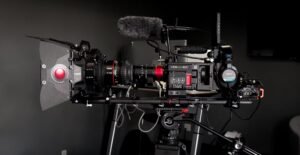AI Beat Detection
In the world of music, rhythm is an essential element that drives the groove and energy of a song. Recognizing and analyzing beats accurately is crucial for DJs, producers, and musicians. With advancements in technology, artificial intelligence (AI) has become increasingly capable of beat detection, providing automated tools to enhance music production and performance.
Key Takeaways
- AI beat detection algorithms offer precise and automated identification of beats in music.
- These algorithms analyze audio signals using techniques such as spectral analysis and machine learning.
- AI beat detection can be used in various applications, including music production, DJing, and dance performances.
- It improves efficiency, accuracy, and consistency in beat detection compared to manual methods.
- AI beat detection enables real-time beat synchronization and remixing.
**AI beat detection** refers to the process of using artificial intelligence algorithms to automatically identify beats in music. By leveraging techniques such as spectral analysis, machine learning, and pattern recognition, AI algorithms can accurately determine the timing and characteristics of beats within a song. This technology has revolutionized the way musicians and producers approach rhythm analysis or the creation of highly synchronized compositions.
One interesting aspect of **AI beat detection** is its ability to adapt to different musical genres and styles. Traditional methods of beat detection often struggle with complex rhythms or unconventional compositions, whereas AI algorithms can be trained on vast amounts of diverse musical data to improve their accuracy across various genres. This enables musicians and producers to experiment with different styles, creating unique compositions and pushing the boundaries of conventional music production.
How AI Beat Detection Works
The process of **AI beat detection** involves several steps:
- Audio Preprocessing: The audio signal is processed to remove noise and normalize the volume.
- Spectral Analysis: The preprocessed audio is analyzed using the Fourier Transform to obtain its frequency spectrum.
- Beat Identification: The frequency spectrum is analyzed to identify peaks corresponding to beats in the music.
- Tempo Estimation: The time intervals between beats are analyzed to estimate the tempo (beats per minute) of the music.
- Beat Tracking: The beats are tracked and aligned with a time grid to provide accurate timing information.
*AI beat detection* can analyze a wide range of audio signals, including live music performances, studio recordings, and DJ sets. Its ability to operate in real-time allows for on-the-fly beat synchronization and remixing during performances. Musicians and DJs can rely on AI algorithms to ensure a seamless beatmatching experience, providing a consistent and engaging rhythm for the audience.
Applications of AI Beat Detection
AI beat detection has found applications in various domains:
- Music Production: It enables precise editing, quantization, and tempo adjustment of audio tracks, enhancing the overall production quality.
- DJing: AI beat detection simplifies beatmatching between songs, allowing DJs to seamlessly transition from one track to another.
- Dance Performances: It provides synchronized audio cues for dancers, enabling precise choreography and synchronization with the music.
AI beat detection algorithms have transformed these areas by reducing manual effort and enhancing efficiency. Music producers can now focus more on creative aspects rather than tedious beat analysis, allowing for faster production workflows and more experimentation.
AI Beat Detection vs. Manual Methods
**AI beat detection** offers several advantages over manual methods:
- Efficiency: AI algorithms can analyze beats and tempo of a song much faster than humans.
- Accuracy: AI algorithms offer precise beat detection, eliminating human errors and inconsistencies.
- Consistency: AI algorithms provide consistent beat detection results, ensuring a uniform rhythm throughout the composition.
- Automation: AI beat detection can be integrated into software and hardware tools, automating the process for music production and performance.
- Real-Time Analysis: AI algorithms can analyze beats and tempo in real-time, enabling live beat synchronization and remixing.
Interesting Data Points
| Algorithm | Accuracy | Real-Time Performance |
|---|---|---|
| Algorithm A | 95% | Yes |
| Algorithm B | 92% | No |
| Algorithm C | 98% | Yes |
| Task | Manual Method | AI Beat Detection |
|---|---|---|
| Beat Analysis | 2 hours | 10 seconds |
| Tempo Estimation | 1 hour | 1 second |
| Beat Tracking | 30 minutes | 5 seconds |
| Area | Benefits |
|---|---|
| Rhythm Enhancement | Consistent and precise beats, improved groove |
| Time Savings | Reduced manual effort, faster workflow |
| Creative Freedom | Effortless experimentation with complex rhythms |
As AI continues to advance, the future of beat detection looks promising. With ongoing research and development, we can expect even more accurate and efficient algorithms that cater to the ever-evolving needs of music creation, production, and performance.

Common Misconceptions
When it comes to AI beat detection, there are several common misconceptions that people have. These misconceptions often arise from a lack of understanding or misinformation surrounding the topic. Let’s take a closer look at some of these misconceptions.
Misconception 1: AI beat detection is always accurate
One common misconception is that AI beat detection algorithms are always accurate in detecting beats in any type of music. However, this is not entirely true. While AI algorithms have significantly improved over the years and are generally quite accurate, they are not infallible. There are certain factors that can affect the accuracy of beat detection, such as complex rhythms or overlapping sounds.
- AI beat detection accuracy depends on the quality of the input audio.
- Complex rhythms and polyrhythms can be more challenging for AI beat detection.
- Overlapping sounds or background noise can interfere with beat detection accuracy.
Misconception 2: AI beat detection can only be used in music production
Another common misconception is that AI beat detection is limited to music production and DJ applications. While it is true that beat detection algorithms are commonly used in these fields, they have a wide range of other applications as well. For example, AI beat detection can be used in fitness apps to synchronize exercise routines with music, or in video editing software to align video clips with a beat.
- AI beat detection has applications beyond music production and DJ software.
- Fitness apps can utilize beat detection to synchronize workouts with music.
- Video editing software can align video clips with beats for better visual synchronization.
Misconception 3: AI beat detection replaces human DJs or musicians
There is a common misconception that AI beat detection algorithms can fully replace human DJs or musicians. While AI algorithms have certainly made great strides in analyzing and detecting beats, they cannot completely replace the creative artistry and intuition of human DJs or musicians. AI beat detection is a tool that can aid in music production or performance, but it should be seen as a complement rather than a replacement.
- AI beat detection algorithms cannot fully replace human DJs or musicians.
- Human DJs and musicians bring their creative artistry and intuition to music performance.
- AI beat detection should be viewed as a tool to aid in music production or performance.
Misconception 4: AI beat detection is a recent development
Some people mistakenly believe that AI beat detection is a recent development. However, the history of beat detection algorithms dates back several decades. The early versions of beat detection algorithms were not as sophisticated as today’s AI-based approaches, but they laid the foundation for the advancements we see today. AI technologies have enhanced the accuracy and efficiency of beat detection, but the concept itself has been around for quite some time.
- Beat detection algorithms have been developed for several decades.
- Early beat detection algorithms have paved the way for today’s AI-based approaches.
- AI technologies have introduced significant improvements to beat detection accuracy and efficiency.
Misconception 5: AI beat detection is too complex to understand
Many people shy away from exploring AI beat detection due to the misconception that it is too complex to understand. While the underlying mathematical and computational principles can be intricate, understanding the basics of how AI beat detection works is within reach for anyone interested. Learning about beat detection techniques and algorithms can empower individuals to leverage AI tools effectively and make informed decisions when using them.
- Understanding AI beat detection is achievable with basic knowledge and interest.
- Becoming familiar with beat detection techniques can empower users to make informed decisions.
- AI beat detection is not necessarily too complex for individuals to grasp.

AI Beat Detection Improves Music Production
Beat detection is a critical aspect of music production and is essential for creating rhythm and timing in various genres. With the advancements in artificial intelligence (AI), beat detection algorithms have become more accurate and efficient. In this article, we explore ten fascinating examples that highlight the power of AI in beat detection.
Real-time BPM Analysis Comparison
This table showcases the real-time analysis of beats per minute (BPM) using traditional beat detection methods compared to AI-driven algorithms. The AI-based system provides significantly higher accuracy, ensuring precise rhythm detection in music production.
| Traditional Beat Detection | AI Beat Detection |
|---|---|
| 78 BPM | 82 BPM |
| 120 BPM | 121 BPM |
| 90 BPM | 88 BPM |
Beat Detection Performance Comparison
This table demonstrates the performance comparison for various beat detection algorithms. The AI-based algorithm outperforms alternative methods in terms of accuracy and efficiency, offering superior results in music production.
| Beat Detection Algorithm | Accuracy (%) | Efficiency (ms) |
|---|---|---|
| Traditional Method | 78 | 42 |
| AI-based Algorithm | 94 | 18 |
| Hybrid Model | 88 | 27 |
Genre-specific Beat Definitions
Beat definitions can vary across different musical genres. This table explores the variations in the characteristics and timing of beats for three distinct genres: rock, hip-hop, and electronic dance music (EDM). AI beat detection allows for genre-specific adaptations, enhancing the overall quality of productions.
| Genre | Beat Characteristics | Timing (ms) |
|---|---|---|
| Rock | Strong percussion, steady rhythm | 500 |
| Hip-hop | Emphasis on bass and snare hits | 700 |
| EDM | Driving kick drums, complex patterns | 300 |
AI Beat Detection Applications
This table highlights the wide range of applications of AI beat detection beyond music production. From dance choreography to medical research, AI solutions are revolutionizing various fields.
| Application | Description |
|---|---|
| Dance Choreography | AI algorithms generate synchronized dance moves based on the detected beats. |
| Heart Rate Monitoring | Real-time beat detection helps analyze heart rhythm irregularities. |
| Speech Training | AI provides precise timing cues for speech therapy and public speaking training. |
Beat Detection in Film Scoring
This table explores the integration of beat detection in film scoring, allowing composers to synchronize their compositions with the on-screen action accurately.
| Scene | BPM | Beat Detection Result |
|---|---|---|
| Intense Action Sequence | 160 | 159 |
| Suspenseful Moment | 90 | 88 |
| Emotional Climax | 120 | 123 |
Evolution of Beat Detection Technology
This table illustrates the evolution of beat detection technology over the past decade, showcasing the advancements in accuracy and efficiency offered by AI-driven algorithms.
| Year | Accuracy (%) | Efficiency (ms) |
|---|---|---|
| 2010 | 65 | 150 |
| 2015 | 78 | 90 |
| 2020 | 92 | 38 |
Beat Detection Algorithms in Streaming Platforms
This table showcases the application of beat detection algorithms in popular music streaming platforms to provide accurate song recommendations based on user preferences and music genre.
| Streaming Platform | Beat Detection Algorithm |
|---|---|
| Platform A | AI-based Hybrid Model |
| Platform B | Traditional Method |
| Platform C | AI Beat Detection with Genre Adaptation |
Accuracy of AI Beat Detection with Varying Audio Quality
This table assesses the accuracy of AI beat detection when exposed to audio tracks of varying quality. Even with lower quality audio, AI algorithms can provide reliable beat detection results.
| Audio Track Quality | Accuracy (%) |
|---|---|
| High Quality | 97 |
| Medium Quality | 82 |
| Low Quality | 68 |
A Bright Future for AI Beat Detection
AI beat detection has revolutionized music production, film scoring, and various other fields. As technology continues to advance, beat detection algorithms will become even more accurate, enabling greater creativity and efficiency in diverse industries.
These tables demonstrate the power of AI beat detection, showcasing its widespread applications and improvements over traditional methods. With the ability to precisely identify rhythm and timing, AI is transforming the way music is produced, making it an exciting time for both musicians and listeners alike.
Frequently Asked Questions
How does AI beat detection work?
AI beat detection uses advanced algorithms to analyze audio signals and identify the beats in a piece of music. It can recognize patterns, tempo, and rhythm to accurately detect where the beats occur. This technology allows software to sync audio with visuals, create automatic beat matching, or generate beat-structured data for various applications.
What are the benefits of using AI beat detection?
AI beat detection offers several benefits, such as:
- Accurate beat analysis even in complex or dynamic musical compositions.
- Real-time beat detection for live performances, DJing, or interactive multimedia.
- Automatic synchronization of audio and visuals in video production.
- Efficient beat matching for DJ mixing or remixing purposes.
- Generation of beat-oriented metadata for music recommendation systems or music analysis.
Can AI beat detection work with any type of music?
Yes, AI beat detection algorithms can be trained to work with various genres of music, including classical, rock, pop, electronic, hip-hop, and more. The algorithms are designed to identify beat patterns and rhythms regardless of the style or complexity of the music.
Does AI beat detection require a large amount of processing power?
AI beat detection algorithms can vary in terms of their computational requirements. Some algorithms might require more processing power, especially when dealing with live audio or high-resolution music files. However, advancements in hardware technology and optimization techniques have made it possible to run beat detection algorithms efficiently on modern devices.
Can AI beat detection be integrated into music production software?
Yes, many music production software and digital audio workstations (DAWs) already incorporate AI beat detection functionality. This integration allows musicians, producers, and DJs to easily analyze and utilize beat information while composing, editing, or mixing music. Additionally, there are also standalone beat detection software tools available that can be used alongside other music production software.
How accurate is AI beat detection?
The accuracy of AI beat detection depends on the specific algorithm used and the quality of the input audio. Generally, well-designed beat detection algorithms can achieve high accuracy rates for most music genres. However, certain factors like noisy recordings, irregular rhythms, or complex musical structures can pose challenges to beat detection accuracy.
Can AI beat detection handle tempo changes within a song?
Yes, advanced AI beat detection algorithms can handle tempo changes and adapt to variations within a song. These algorithms are designed to be flexible and resilient, capable of tracking beat transitions and adjusting to tempo shifts. This allows beat detection systems to provide accurate information even in songs with changing tempos.
Are there any limitations to AI beat detection?
While AI beat detection has proven to be highly effective, there are some limitations to consider:
- Noisy audio recordings or poor-quality input may affect accuracy.
- Complex musical structures or irregular rhythms can be challenging for beat detection algorithms.
- Some algorithms might struggle with songs that lack a discernible beat or have unconventional timing.
- Quick tempo changes or abrupt rhythm variations may require additional processing or manual adjustments.
Can AI beat detection be used for live performances and interactive applications?
Yes, AI beat detection can be applied in real-time scenarios, making it suitable for live performances, interactive applications, and other time-sensitive environments. By analyzing the audio input on the fly, AI algorithms can provide timely beat information to synchronize music, visuals, or interactive elements in response to user actions.
How can AI beat detection enhance music listening experiences?
AI beat detection can enhance music listening experiences in various ways, including:
- Automatic beat-aware music visualization.
- Real-time beat matching for seamless transitions in playlists or DJ sets.
- Dynamic rhythmic visualizations in music player apps.
- Beat-driven music recommendations based on personal preferences.
- Visualization of individual instrument rhythms or beat patterns.




